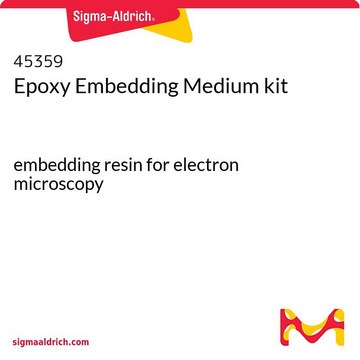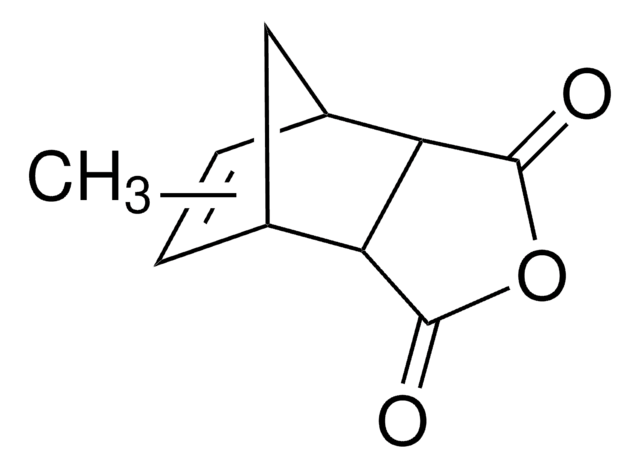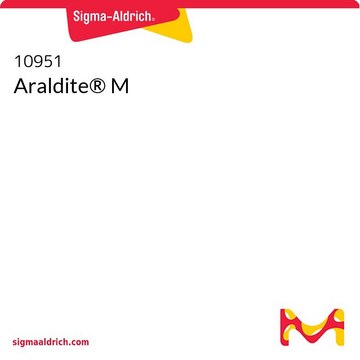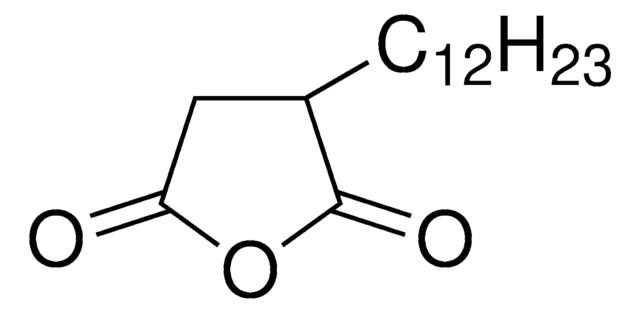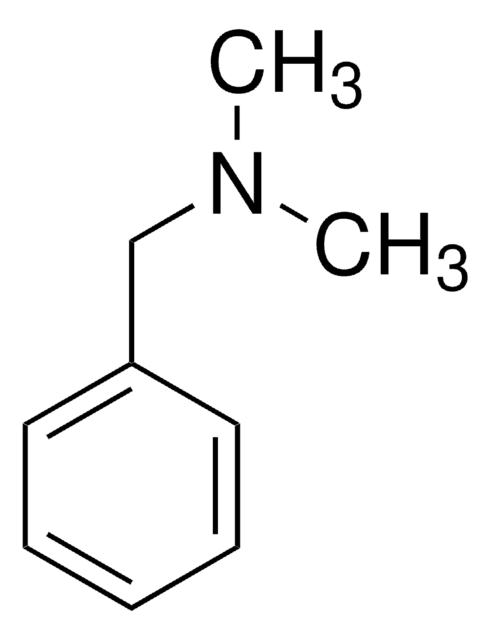45348
Epoxy embedding medium, accelerator
≥95% (NT)
Sinónimos:
2,4,6-Tris(dimethylaminomethyl)phenol, Epon™ DMP 30 substitute, DMP-30
About This Item
Productos recomendados
densidad de vapor
>1 (vs air)
presión de vapor
<0.01 mmHg ( 21 °C)
Ensayo
≥95% (NT)
Formulario
solid
color
colorless to light yellow
índice de refracción
n20/D 1.516 (lit.)
n20/D 1.517
bp
130-135 °C/1 mmHg (lit.)
densidad
0.969 g/mL at 25 °C (lit.)
aplicaciones
hematology
histology
temp. de almacenamiento
2-8°C
cadena SMILES
CN(C)Cc1cc(CN(C)C)c(O)c(CN(C)C)c1
InChI
1S/C15H27N3O/c1-16(2)9-12-7-13(10-17(3)4)15(19)14(8-12)11-18(5)6/h7-8,19H,9-11H2,1-6H3
Clave InChI
AHDSRXYHVZECER-UHFFFAOYSA-N
¿Está buscando productos similares? Visita Guía de comparación de productos
Aplicación
Información legal
Producto relacionado
Palabra de señalización
Danger
Frases de peligro
Clasificaciones de peligro
Acute Tox. 4 Oral - Eye Dam. 1 - Skin Corr. 1B
Código de clase de almacenamiento
8A - Combustible corrosive hazardous materials
Clase de riesgo para el agua (WGK)
WGK 1
Punto de inflamabilidad (°F)
300.2 °F - closed cup
Punto de inflamabilidad (°C)
149 °C - closed cup
Equipo de protección personal
Faceshields, Gloves, Goggles, type ABEK (EN14387) respirator filter
Elija entre una de las versiones más recientes:
¿Ya tiene este producto?
Encuentre la documentación para los productos que ha comprado recientemente en la Biblioteca de documentos.
Los clientes también vieron
Nuestro equipo de científicos tiene experiencia en todas las áreas de investigación: Ciencias de la vida, Ciencia de los materiales, Síntesis química, Cromatografía, Analítica y muchas otras.
Póngase en contacto con el Servicio técnico
